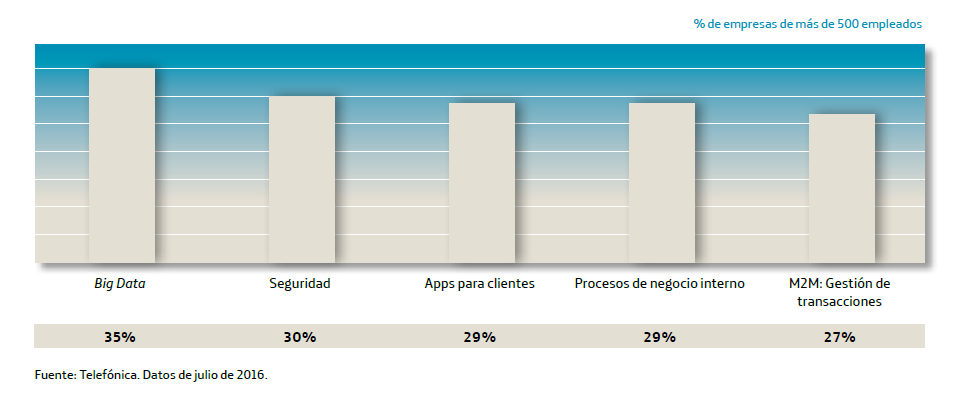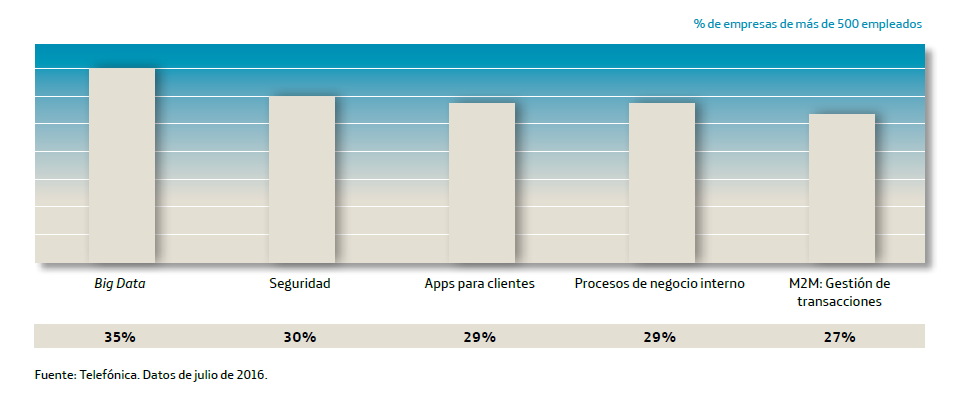The public sector has access to huge amount of information. By using this wisely, big data benefits sectors of the economy far beyond the public sector.
Normally, local governments and public organizations use a reactive model to offer services to people who ask for them. It can be difficult to change this situation. They often simply don’t have the human resources to better deal with their citizens’ problems.
Fortunately, technology is helping us improve how governments provide services to their citizens. Advances in technology also mean advances in how public organizations can provide social services to the people who need them. When used correctly, big data benefits not only the public sector, but goes far above and beyond.
One country that could provide a model for many other countries in what’s called eAdministration is Spain. The Telefonica Foundation’s annual report, “The Society of Information in Spain 2016” (La Sociedad de la Información en Espana 2016), ranks Spain as 17th in the world in the E-Government Development Index (EGDI) from the United Nations.
This index monitors the evolution of eAdministration every two years in 193 different countries. It focuses on three key indicators: infrastructure and telecommunications, human capital, and online services. In Europe, Spain is ranked fifth, well above the European average, in terms of public services available in digital form.
Change in action
You may have noticed these changes yourself. One important development is document digitalization, which means we no longer have to go through the cumbersome process of moving paper files from, say, a registration office to make a request to a second office to file the paperwork.
Optimism about Spain’s future aside, it’s important to be aware of the fact that lots of people are completely unaware of the services they have rights to. Many might not even know how to access them.
 Contrary to what you might expect, older segments of the population are already engaged in the digital world. A key piece of information from the Telefonica report shows that the use of tablets by over-65s to interact with public administrations has risen 174% over the past year.
Contrary to what you might expect, older segments of the population are already engaged in the digital world. A key piece of information from the Telefonica report shows that the use of tablets by over-65s to interact with public administrations has risen 174% over the past year.
How can we provide social services to more people?
What can Big Data do to keep improving how administrations provide social services to all segments of the population?
Public administrations have an enormous amount of information from numerous sources, which may be used byany number of offices. Much of this is in an unstructured format.
Rather than being a trendy topic, Big Data is a reality in public administration.
The Telefonica report includes a section discussing the use of Big Data as a key tool in decision-making processes. In 2016, Big Data solutions received the largest share of digital investment (35%) in companies with more than 500 employees.
What problems can public sector data help solve?
What is particularly valuable about Big Data is its predictive capacity. This is where the tool excels in terms of achieving better management of public resources. At Bismart, we have multiple projects, both internal and external, that demonstrate how intelligent use of information can help solve social issues.
Spain is a leader in terms of how much open data is available to the public sector. Information generated by administrations is a valuable resource far beyond the public sector. It has a huge capacity to generate wealth and employment in the rest of the economy.
It can be used to help develop local businesses, manage tourism, and improve public management thanks to the concept of smart cities.
Because of keen interest in how Big Data can be used to improve social services, Bismart and Microsoft held a joint event called “Big Data Saves Lives” in Barcelona this past month. If you couldn’t attend the event, you can watch videos of speakers and presentations at this link.
Are you interested in finding out more about how our Big Data solutions can help you solve problems? Get in touch with us today.



